Tucked away in southeastern Sicily, the small town of Noto completely stole my heart with its golden limestone buildings and dramatic baroque flair. Wandering its streets, I felt like I’d stumbled onto a living 18th-century stage, where ornate balconies and intricate church facades whisper stories of creativity rising from disaster.
Noto shines as the crown jewel of Sicily’s Val di Noto, a UNESCO World Heritage Site famous for some of the world’s most breathtaking baroque architecture.
I can still picture my first look at Noto’s main drag, Corso Vittorio Emanuele, where honey-colored palaces and churches seem to catch fire in the sunset. Believe it or not, this entire architectural dreamscape didn’t always exist—the original town vanished in the 1693 earthquake.
Instead of just patching things up, locals dreamed bigger. They built an entirely new town, a baroque fantasy that speaks of resilience and bold imagination.
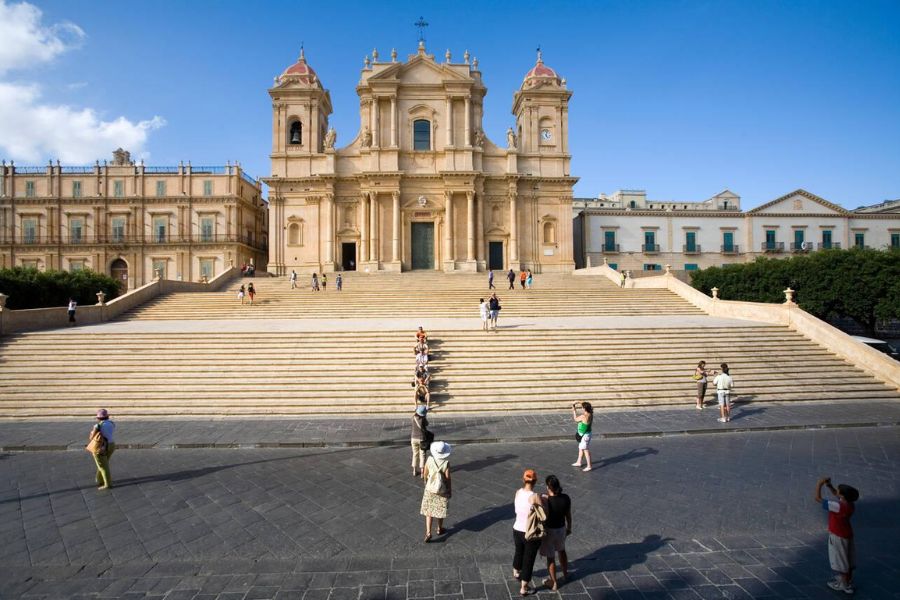
What really makes Noto stand out is how completely it embodies its baroque identity. Unlike most European cities where styles clash, Noto keeps things harmonious from one end to the other. Every elaborate stone carving and carefully planned street shows why UNESCO didn’t just honor Noto, but also seven other towns in the Val di Noto, for their baroque beauty and cultural impact.
The Baroque Beauty of Noto
Noto’s architecture is honestly one of Europe’s finest displays of Baroque style. Those honey-colored limestone buildings just glow under the Sicilian sun, creating a theatrical backdrop that feels almost unreal.
Evolution of Sicilian Baroque
Sicilian Baroque took shape here in a way you won’t find anywhere else. I found myself amazed at how local architects mixed old traditions with a distinctly Sicilian twist. The buildings show off elaborate balconies, curved facades, and ornate decorations that blend Spanish and French influences with local hands.
Noto really leans into the Baroque aesthetic. As I strolled the streets, I noticed clever tricks with perspective that make the buildings look even grander. Churches like San Nicolò Cathedral display the peak of Sicilian Baroque, with grand staircases and lavish interiors.
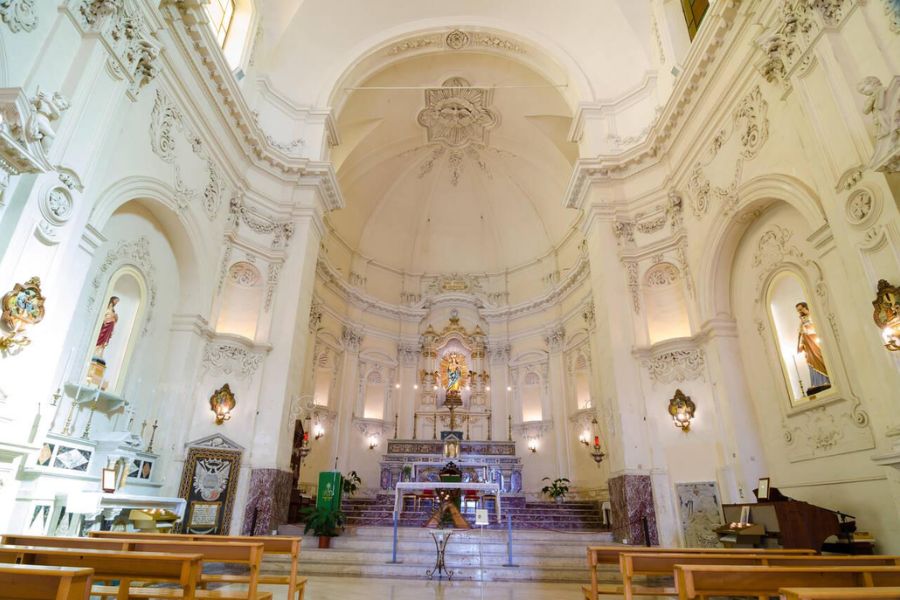
The whole town’s layout reflects Baroque ideals. Wide streets invite processions, while the placement of buildings creates dramatic, unforgettable views.
The Aftermath of the Earthquake of 1693
That 1693 earthquake tore through eastern Sicily and erased the old town of Noto Antica. This tragedy somehow sparked a new beginning. Local nobles and architects picked a fresh spot in the Asinaro Valley and started over.
They didn’t just rebuild—they reimagined everything. I found it fascinating how visionaries like Rosario Gagliardi and Vincenzo Sinatra mapped out a city based on Baroque planning, with neat grids and eye-catching monuments.
Throughout the 18th century, construction transformed the area into the honey-hued city we see now. Every building adds to the sense that you’re walking through a grand, baroque stage.
UNESCO World Heritage Status
In 2002, the Late Baroque Towns of the Val di Noto landed a spot on UNESCO’s World Heritage List. This honor celebrates the architectural revival that followed the 1693 disaster.
Val di Noto and Its Significance
UNESCO’s Val di Noto includes eight towns: Noto, Caltagirone, Catania, Militello Val di Catania, Modica, Palazzolo Acreide, Ragusa, and Scicli. I couldn’t believe how each one showcases the heights of Sicilian Baroque design.
What’s remarkable is how these towns rose from ruin with a sense of unity. Walking through Noto, I felt the deliberate theatricality in the city’s layout—it’s honestly breathtaking.
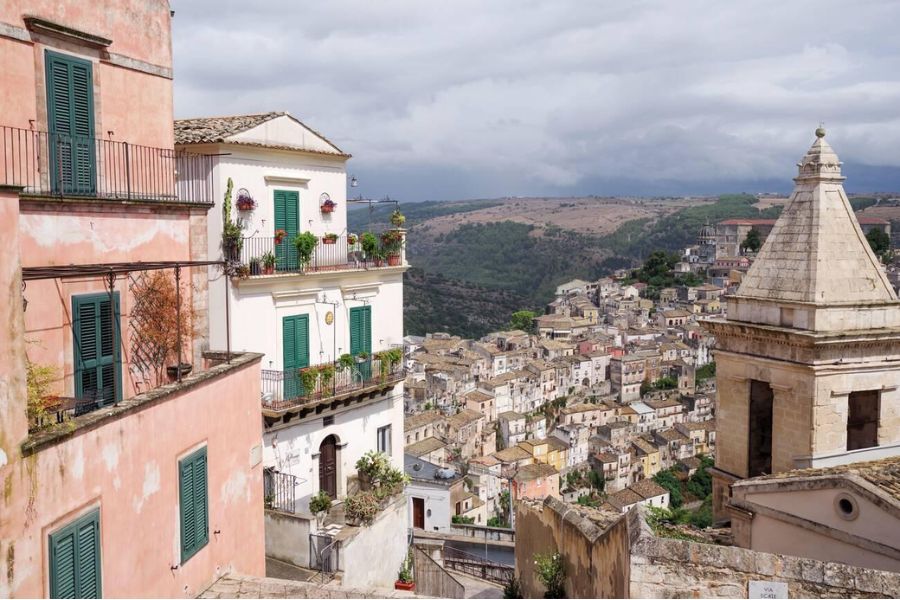
Each place adds its own flavor. Ragusa impresses with its dramatic hillside perch, while Noto itself often gets called the perfect example of Baroque city planning, thanks to those golden-hued limestone facades.
Restoration and Preservation Efforts
After UNESCO recognition, restoration teams got busy reviving Val di Noto’s treasures. I’ve seen how local leaders work hard to protect the past while keeping up with today’s needs.
The Cathedral of Noto really stands out as a symbol of these efforts. When its dome collapsed in 1996, painstaking restoration brought it back to life.
Preserving Noto isn’t just about stone and mortar. It’s about keeping traditional construction skills alive. Craftspeople still shape that signature honey limestone using old-school techniques passed down over generations.
Tourism management matters, too. When I visited, I saw info panels and guided tours that help people understand the history, while also making sure these baroque gems stay safe for the future.
Iconic Landmarks and Architecture
Noto’s baroque architecture is honestly what makes this town unforgettable. The city bursts with buildings that show off the artistry and vision of 18th-century Sicilian masters.
Cathedral of San Nicolò
The Cathedral of San Nicolò rises above Noto as its most iconic sight. I remember standing at the foot of its staircase, just staring up at a facade that screams Sicilian baroque. After the dome’s collapse in 1996, experts spent a decade restoring it before reopening.
Inside, three naves stretch out, creating a spacious, almost overwhelming sense of grandeur. The honey-colored limestone glows warmly at sunset—photographers, take note! If you’re up for it, climb the bell tower for sweeping views of Noto that are simply unforgettable.
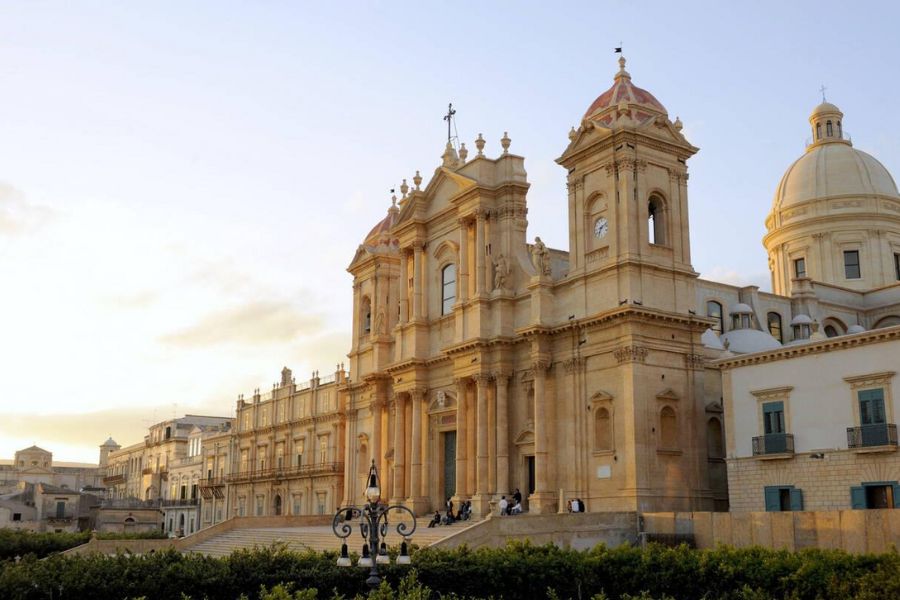
The dome’s colorful frescoes bring biblical scenes to life with vivid colors and detail. Local artisans spent years carving the intricate decorations that cover both the inside and outside.
Palazzo Nicolaci
Palazzo Nicolaci (some call it Palazzo Villadorata) might be Noto’s most over-the-top palace. Walking along Via Nicolaci, I found myself gaping at the balconies—each supported by wild carved figures: cherubs, mythical beasts, even horses.
Built for the wealthy Nicolaci family, the palace boasts 90 rooms. Part of it now houses the Municipal Library, while other areas are open for tours.
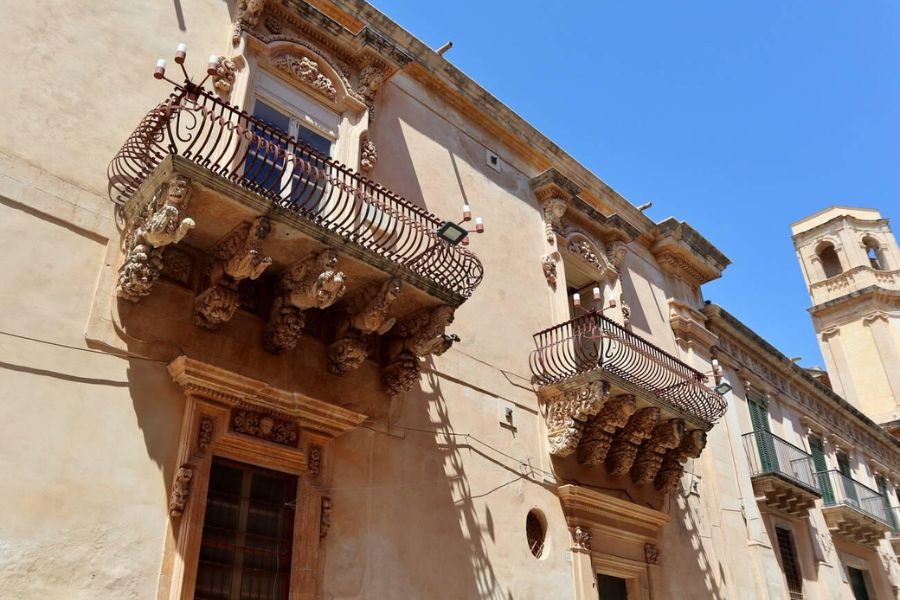
Inside, the ceilings dazzle with ornate frescoes. The noble apartments give you a peek into the extravagant lives of Sicily’s old aristocracy. If you’re around in May, don’t miss the Infiorata flower festival—Via Nicolaci turns into a jaw-dropping carpet of blooms right outside this baroque gem.
Churches and Spiritual Heritage
Noto’s churches are some of the best showcases of Sicilian Baroque. These aren’t just spiritual sanctuaries; they’re works of art born from the ashes of 1693.
Church of Santa Chiara
Santa Chiara quickly became one of my favorite churches in Noto. The elliptical dome and ornate facade grabbed my attention right away. Built in the early 1700s, it features stone carvings that seem to catch fire in the Sicilian sun.
Inside, I found stucco decorations swirling across the walls and ceilings. Sunlight pours in, showing off the detailed craftsmanship of the altar and side chapels.
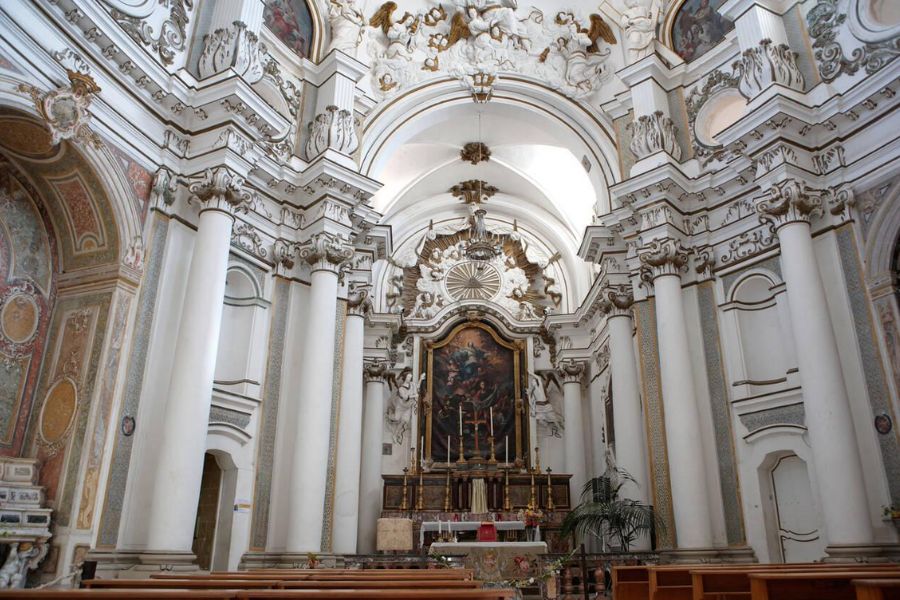
The rooftop terrace is a real treat. For a small fee, I climbed up and soaked in panoramic views of Noto’s golden buildings and the countryside beyond.
Other Noteworthy Churches
San Nicolò Cathedral dominates the skyline with its dramatic dome—rebuilt after the collapse, using time-honored methods. The grand staircase out front gives you that classic Baroque sense of drama.
San Domenico’s concave facade and elegant bell tower charmed me. Its proportions are just so pleasing—Baroque harmony at its best.
You shouldn’t skip San Francesco all’Immacolata, with its curved staircase, or the Monastery of Santissimo Salvatore, famous for ornate balconies. Each church brings a fresh twist on the Baroque style that makes Noto such a UNESCO standout.
Exploring Noto’s Culture and Surroundings
Noto’s appeal goes way beyond architecture. Grand entrances, noble palaces, and mouthwatering food make this city a feast for all the senses.
Porta Reale and the Triumphal Arch
As soon as I arrived, the Porta Reale arch pulled me in. It’s the main gateway into the old town and sets the mood for the Baroque adventure ahead.
Built in the 19th century to honor King Ferdinand II’s visit, the arch shows off elegant columns and detailed carvings that echo Noto’s style. The stone glows honey-gold in the afternoon—perfect for photos.
From here, Corso Vittorio Emanuele stretches out like a stage, lined with the city’s main sights. It’s a great place to start exploring, with everything laid out in front of you.
Noto’s Grand Palaces
The aristocratic palaces of Noto give you a peek into the city’s rich past. Palazzo Ducezio, now the town hall, wowed me with its neoclassical curves and columns.
Inside, the Hall of Mirrors sparkles with gold details and crystal chandeliers. When the sunlight filters in, the room feels almost magical.
Other palaces worth seeing:
- Palazzo Nicolaci di Villadorata and its wild balconies
- Palazzo Astuto with impressive ironwork and balconies
- Palazzo Trigona showing off beautiful baroque touches
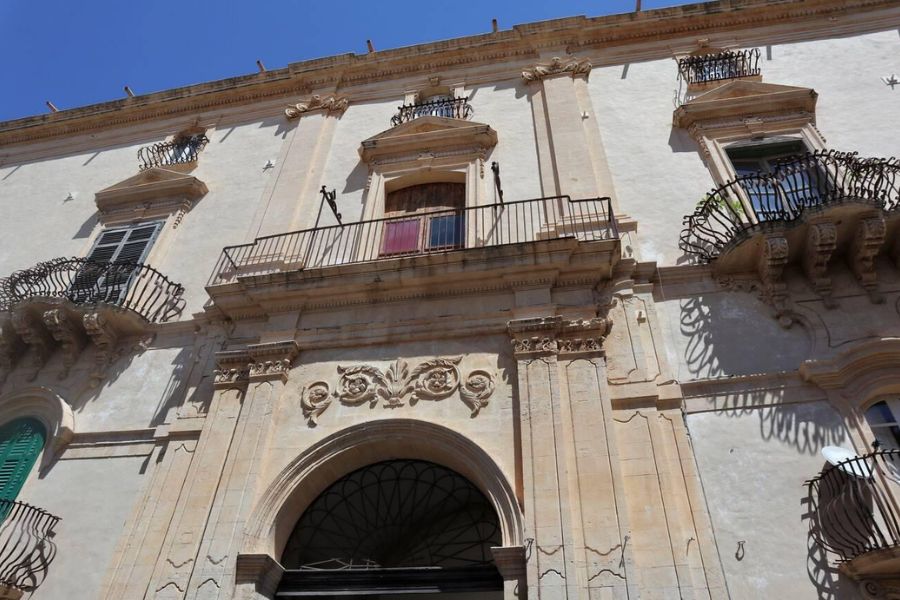
Each one tells a story of Noto’s aristocracy rebuilding and thriving after disaster.
Chocolate and Other Local Delicacies
You can’t come to Noto and skip the local treats. Modica, just nearby, is famous for chocolate made with ancient Aztec methods brought by the Spanish.
This chocolate feels grainy and tastes pure—nothing like the mass-produced stuff. Shops in Noto sell bars flavored with pistachio, citrus, or even chili.
I’d also suggest trying:
- Granita – a cold, slushy dessert that’s perfect for hot days
- Arancini – crispy rice balls with all sorts of fillings
- Cassata – a sweet, ricotta-filled cake with candied fruit
Don’t miss the almond pastries, either. The best ones, in my opinion, come from tiny, family-run bakeries tucked away from the main street.
Day Trips and Connections Beyond Noto
Noto makes a fantastic base for exploring southeastern Sicily. The region is packed with culture and history that perfectly complements Noto’s baroque magic.
Discovering Ragusa and Ragusa Ibla
Ragusa just might be one of the most breathtaking stops in the Val di Noto region. The city splits in two—the modern upper town sits above, while ancient Ragusa Ibla sprawls below.
To get from one part to the other, I wandered up and down winding staircases and squeezed through narrow streets that twist along the hillside.
Ragusa Ibla really stole my heart. Its baroque architecture feels almost unreal.
The Cathedral of San Giorgio rises up as the centerpiece here, surrounded by noble palaces and ornate old churches.
If you can, start your day early. The golden morning light makes the limestone buildings absolutely glow.
The Hyblaean Mountains loom in the distance, giving this UNESCO-protected town a dramatic edge.
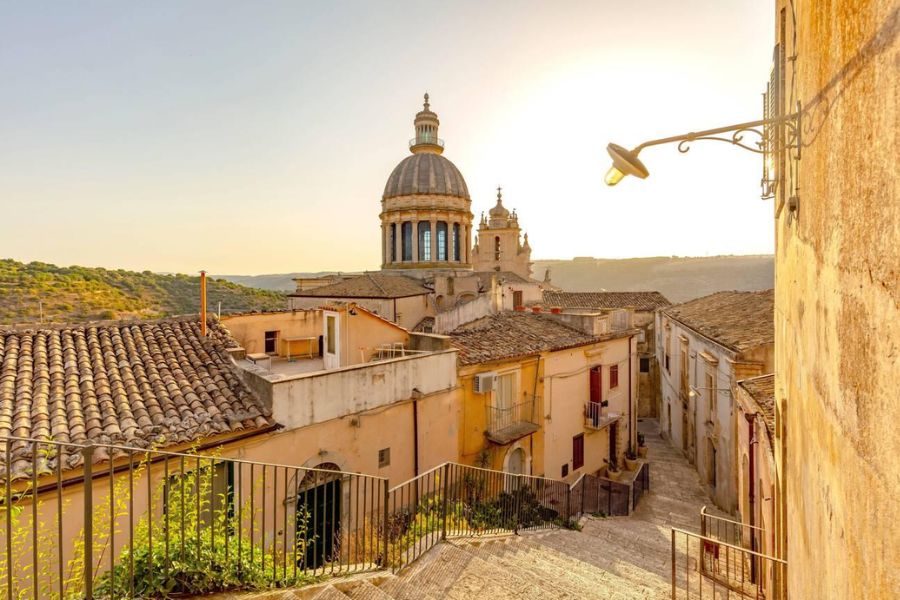
I tried a few local restaurants, and honestly, the Sicilian food blew me away. Many spots have terraces where you can look out over the valley while you eat.
From Noto to Modica and Catania
Modica caught me off guard with its dramatic layout, spread across two valleys that seem to tumble into each other.
The town is famous for its baroque churches—those facades are impossible to miss. And the chocolate! They still make it using ancient Aztec methods that Spanish rulers once introduced.
The Cathedral of San Giorgio dominates the skyline here. I wandered into a few chocolate workshops, and watching the process felt like stepping back in time.
Catania, though, feels like a different world entirely. The city buzzes at the foot of Mount Etna. Many of its buildings are carved from volcanic stone, which gives the place a bold, moody look.
Each morning, La Pescheria—the fish market—comes alive. Locals shout, bargain, and fill the air with energy.
Getting from Noto to these towns is pretty straightforward:
- Noto to Modica: 30-40 minutes by car.
- Noto to Catania: Around 1 hour and 15 minutes driving.
- Public transport: It exists, but schedules can be sparse, so plan ahead if you go that route.
Venturing to Syracuse and Beyond
Syracuse (Siracusa) really pulled me in with its wild mix of Greek, Roman, and Baroque influences.
Ortigia, the island heart of the city, connects to the mainland by a couple of bridges. Here, ancient Greek ruins sit right beside winding medieval streets.
I spent an evening at the Archaeological Park of Neapolis. The Greek theater there is surprisingly well-preserved, and watching the sunset light up the ancient stone felt magical.
The Ear of Dionysius, a limestone cave with wild acoustics, is worth a detour. It’s honestly kind of eerie inside.
Syracuse’s ties to mythology and history run deep. At one point, it was the most powerful city in the Mediterranean and even rivaled Athens for cultural clout.
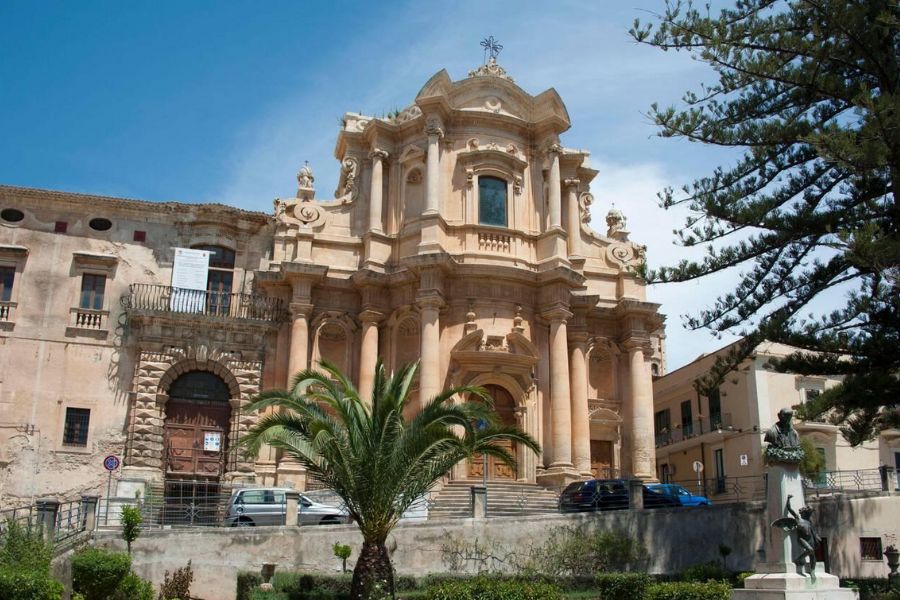
From Syracuse, I hopped on a boat to see the eastern Sicilian coast from the water. The sea here is so clear you can spot hidden coves and dramatic limestone cliffs that you’d never see from land.
Noto’s Global Cultural Reach: Australia & the Gold Coast
It’s kind of fascinating—Noto’s cultural influence isn’t just stuck in Sicily. I stumbled across pockets of Sicilian immigrants in Australia, especially along the Gold Coast, who brought bits of Noto’s architecture and traditions with them.
Most of these connections really took shape after World War II, when lots of Sicilians set out for new lives overseas. Even now, you’ll find festivals in these Aussie communities that celebrate Noto’s patron saint.
Some restaurants on the Gold Coast serve old-school Sicilian dishes. The recipes? Families from Noto handed them down over the years.
If you look closely, you can spot Sicilian baroque touches in a few churches and community buildings in these neighborhoods.

